
Nakajima
B6N2 'Jill'
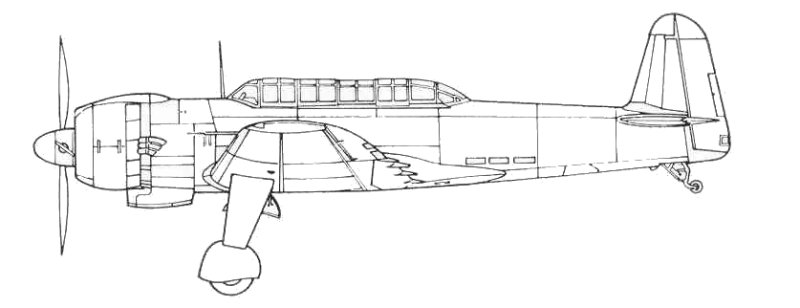
The B6N was intended as a replacement for the B5N and was designed to a 14-Shi specification issued in 1939 by the Imperial Naval staff. The B6N offered no major aerodynamic improvements over the B5N, the increase in performance was achieved by using an engine offering 80% more power than the one used in the B5N. Carrier stowage restrictions resulted in a wing span and area as that of the B5N. Two prototypes were ready for flight trials in the spring of 1941. Early flight test results indicated that the design suffered from directional stability problems due to the torque from the four bladed propeller. Development problems with the engine also slowed its development. By the end of 1942 it was considered ready for carrier acceptance trials but strength issues with the arrestor hook further slowed progress. In early 1943 it finally completed its carrier acceptance trials.
Production aircraft introduced several modifications that were dictated by the result of the flight trials. These included replacement of the single exhaust stack with a series of smaller stacks, the torpedo rack under the starboard fuselage side angled down two degrees, strengthening the landing gear attachment and the tail plane mounting, the mounting of a machine gun firing through a ventral tunnel. attempts were made to replace the unprotected integral fuel tanks with bag type tanks but this reduced the fuel capacity by an unacceptable amount.
In
service the B6N performed satisfactorily but its high landing
speed and
wing loading restricted its use to the larger carriers. The
production
program suffered a setback when the chosen engine went out of
production and Nakajima was forced to re-engine the B6N with a
Mitsubishi engine. The early aircraft were designated B6N1 and
when
re-engined became the B6N2.
The Kit
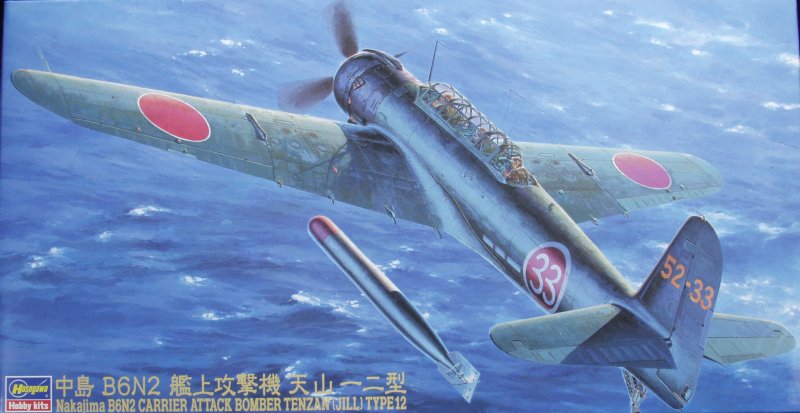
The Hasegawa kit comes in their typical sturdy two part top open box with attractive artwork on the top. Inside the box all of the parts except for the clear parts are contained in a single bag and as a result some of the parts had scuff marks from shipping. There are 10 sprues in a medium gray color. Some were duplicates. The parts feature recessed panel lines and some recessed rivet detail as well as raised detail where applicable. I found no surface defects outside of the scuffing on any of the exterior surfaces.
The control surfaces are all fixed in the neutral position except for the flaps which may be positioned up or down. The inside surfaces of both the wings and flaps have nice detail as do the wheel wells. As is usually the case the insides of the gear doors and gear struts themselves feature ejector pin marks, it seems to be a Hasegawa trademark. The under side of the wing flaps have them as well. The interior, which is extremely well detailed, and there does not appear to be any ejector pin marks that will show there when completed.
The wing assemblies are complicated by the inclusion of the option to display the wings folded. There are detailed bulkheads to fill the ends of the wings. From what I have read this tends to make the wings weak when displayed deployed and solidly gluing them may be the best option. The engine is a single piece molding but it sets deep in the tight cowl and really won't be seen well enough to justify much detail. There are holes that need to open up on the center section of the wing if you plan to use the supplied torpedo. The wheels are weighted. All together the kit contains 132 parts in gray by my count. See below.
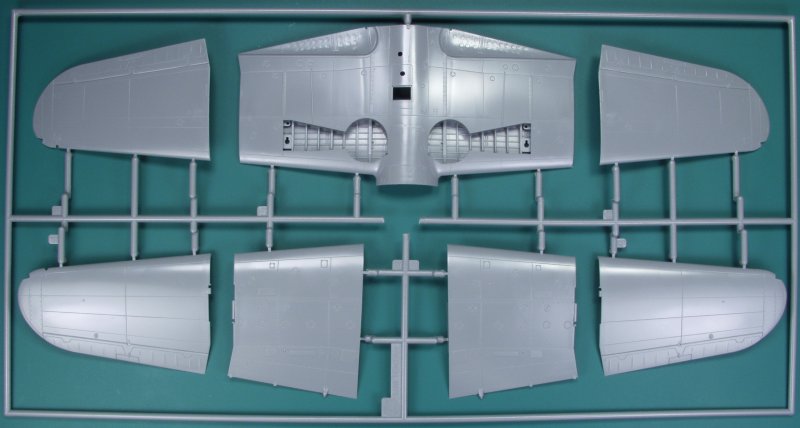
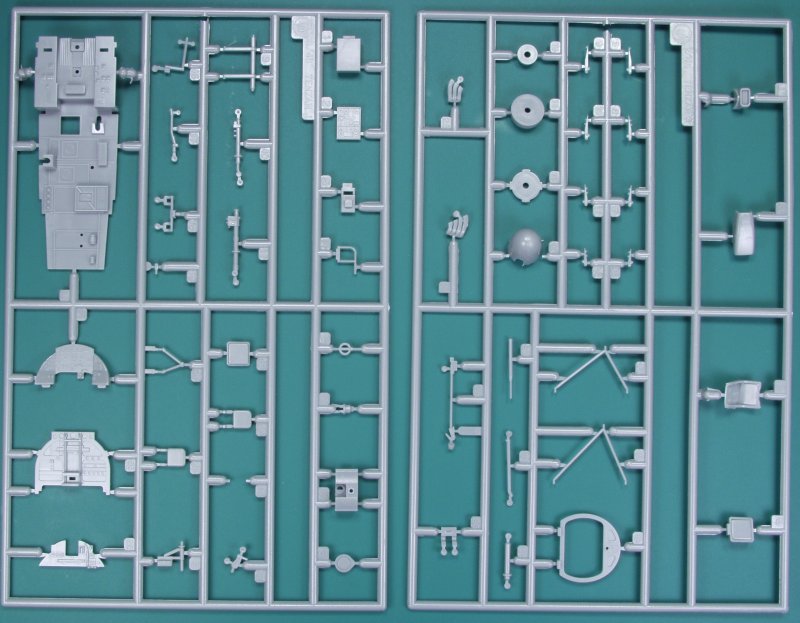
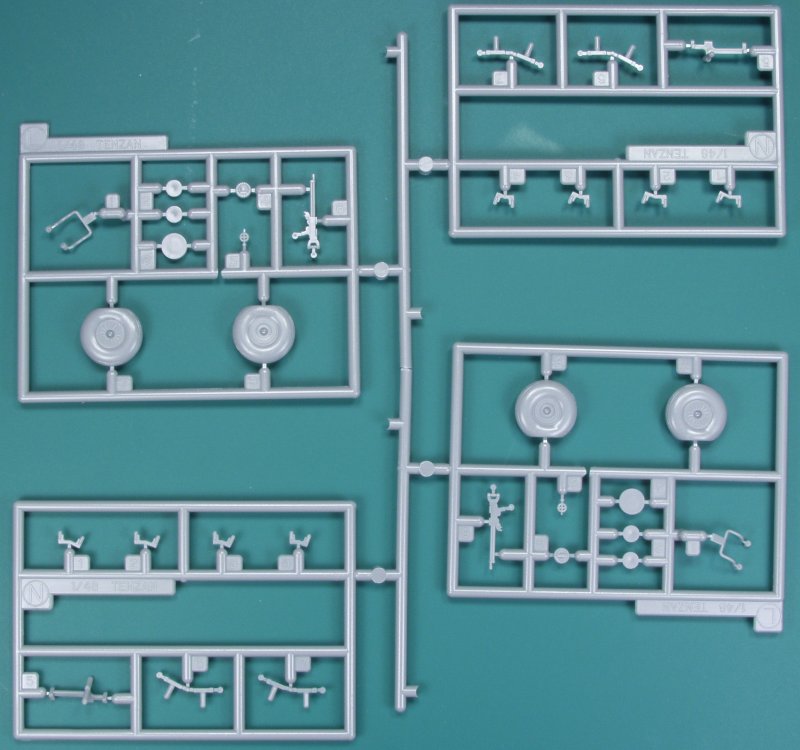
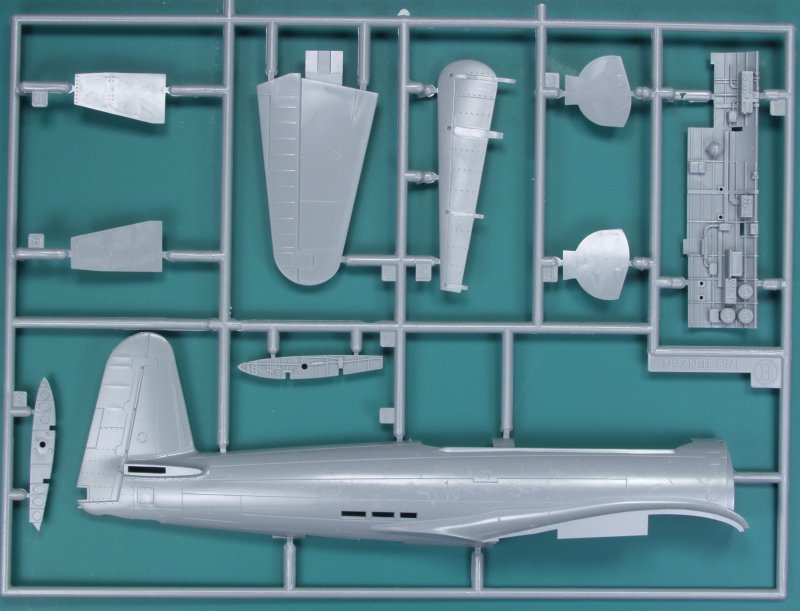
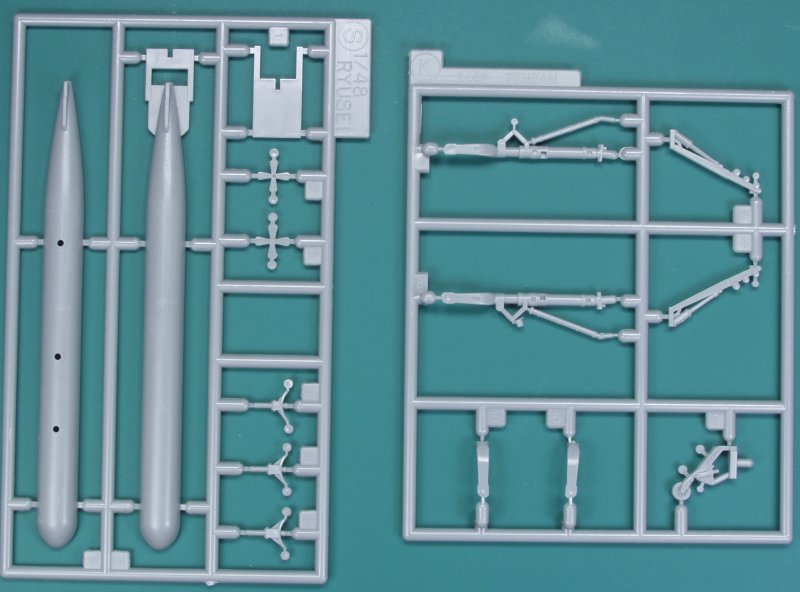
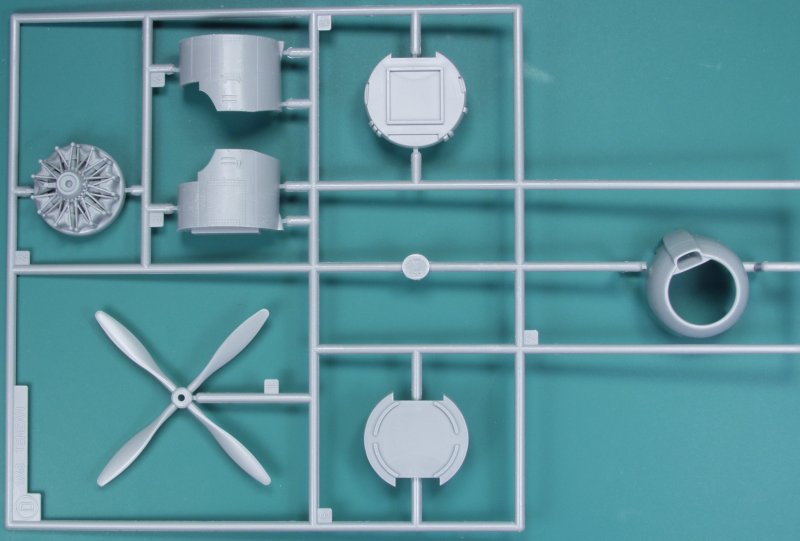
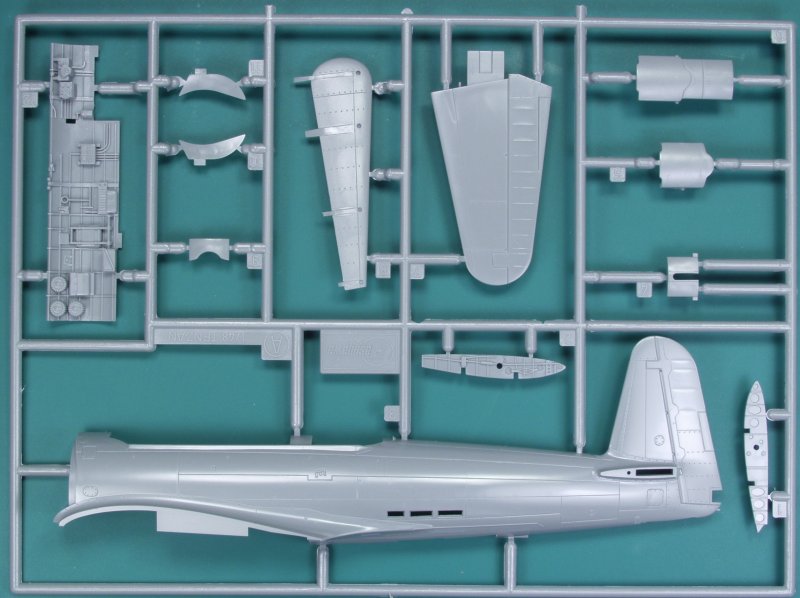
The clear parts are thin and clear but are not designed to be displayed in the open position and this is a shame considering how well detailed the interior is. All together there are 14 clear parts. See below.
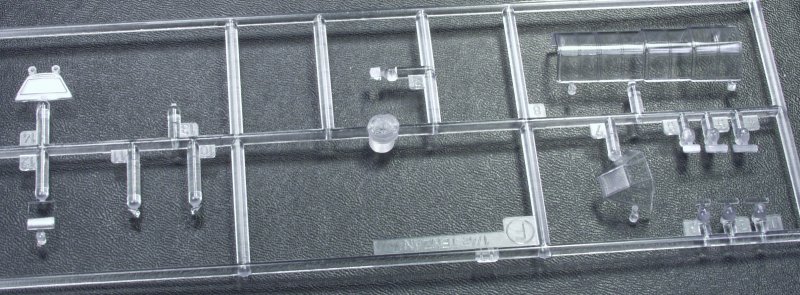
The decals look thin and opaque and are reasonably well registered where applicable. The sheet supplies markings for two aircraft however additional numbers are supplied so additional aircraft from the same squadron or group could be modeled. See below.
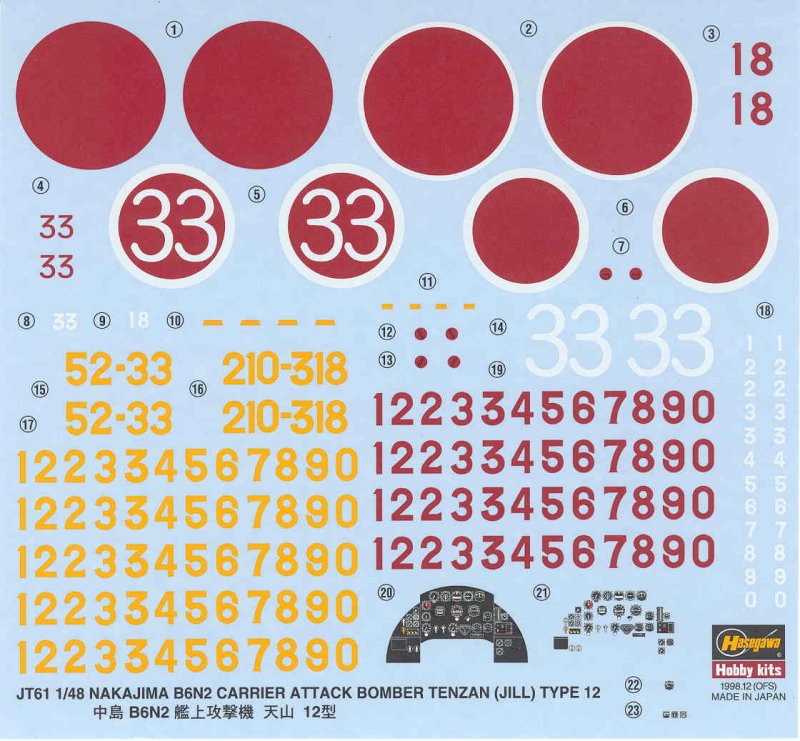
The instructions are provided on a wide format A4 height sheet folded to create eight panels. The first panel has history and specifications in Japanese and English, the next three and 1/3 panels have the assembly drawings, the other 2/3 of forth panel are parts map. The next two panels are painting and marking instructions and the last panel has a paint chart, generic decal instructions and the usual CYA safety warnings.
After Market Goodies
I have not acquire any for this although there are both photoetch [Eduard 48280] and a masking set [Eduard EX063] available. I think the interior is good enough as it is but with Japanese aircraft a masking set is always a time saver.
Conclusions
This another well detailed and engineer kit that with the exception of the wing fold feature should not give most modelers with a bit of experience any problems, highly recommended.
Links to kit build or reviews
Build / reviews can be found here and here.
References
Japanese Aircraft of the Pacific War by R.J. Francillon
Back to the Misc Japanese page